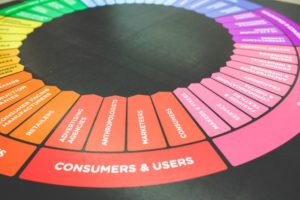Customer-centric organizations are 60% more profitable than non-customer focused organizations (Deloitte and Touche). Forrester Research declares 2017 the year that businesses become customer-obsessed. So what is the secret? Providing ‘value’ to the Customer. However, most organizations are terrible at doing this and particularly bad at articulating it.
According to a recent Gartner survey, 74% of providers focus too much on their product features and technology. But if product features aren’t that critical when your buyer is making a decision, what is?
What customers really want from your organization is help solving their problem. They want to hear what other customers were able to achieve by using your solution. They want to understand the value and benefits your products promise to deliver, not just the product itself. But this can get a little tricky, as value is defined differently by everyone.
I have just read a great new book called Value-ology Palgrave McMillan, 2017. Value-Ology is the art and science of creating relevant value for customers.
In the book, the authors explain that the single most important factor to determining your business success, is your ability to tune into and deliver what your customers value.
- It starts with objective analysis
- What do your Customers care about?
- Create your value proposition using a formula so it can be repeated
- Turning your value proposition into effective sales and marketing messaging and content to reach potential buyers
The authors offer 7 Reasons why you should focus on Customer value:
1.Customers want value, not products.
Only 16% of C-level customers chose a vendor because of their product. Instead, what buyers want is a stellar sales experience where they can learn something new, and marketing content that educates and makes them smarter.
2. Organizations using Value-ology grow faster 
Aberdeen group research said that organizations who effectively leverage online resources to learn about their customers (Value-ology approach) grow 21%. And customer-centric organizations are 60% more profitable compared to those that aren’t (Deloitte and Touche).
3. It is time to resonate with customers—and stop wasting money.
B2B organizations waste $958 million on ineffective marketing content every year. But besides the steep cost to your bottom line, perhaps even worse is the fact that 94% of customers have disengaged with content because it fails to connect with them (CEB). And
91% say they will share engaging content with peers.
Themes prove effective with customers.
4.You need to achieve customer alignment.
Typical customers are 60% of way through buying process before they contact you (CEB), and 67% have a clear picture of what they want when they first speak to you. If you are not collaborating with a customer early, chances of influencing their purchase drop significantly.
5. Marketing and sales need to collaborate.
90% of marketing content is not used by sales (CMI), which shouldn’t come as a surprise considering that 88% of marketers we recently surveyed had no idea what content their sales team needs to close more business. If marketing isn’t producing content that will help advance the sales cycle, what are they creating?
6. Relevance is persuasive and sells more.
58% of deals end-up in no sales because value has not been proven (Qvidian). 
McDonald research says value proposition approach drives 10% revenue growth.
MHI Global reports buyers emphasize identifying and calculating the benefits of any potential purchase. This means you should demonstrate the ROI of your solution using real customer testimonials or case studies.
7. It’s not just about the sales; it’s about service and experience.
Value-in-use: the customer only gets value from a product or service once they start to use it. Why then do so few organizations follow-up with customers to review whether the value proposition has been delivered?
All of this is easier said than done, as recent research shows that 83% of marketers have no idea how to develop or apply a customer value proposition! The danger of not being able to craft or communicate your value proposition, of course, is lost sales. In fact, according to Qvidian Research, 58% of deals currently end up in “no decision” because value was not presented effectively.
So ask yourself these questions:
- Are we producing generic sales and marketing content?
- Do we REALLY know why our customers do business with us?
- What do our customers want or expect from us?
- Does most of our marketing content talk about our products and not about the value our products provide?
- Is anyone at our organization looking at the competition to be able to articulate why we are different or better?
As it turns out, there is a formula to uncover and communicate customer value. The authors of Value-ology will be sharing templates, tools and insights at a webinar on March 30th. I would suggest you tune in and see how you fare and learn what you can do to craft your own compelling value proposition.


